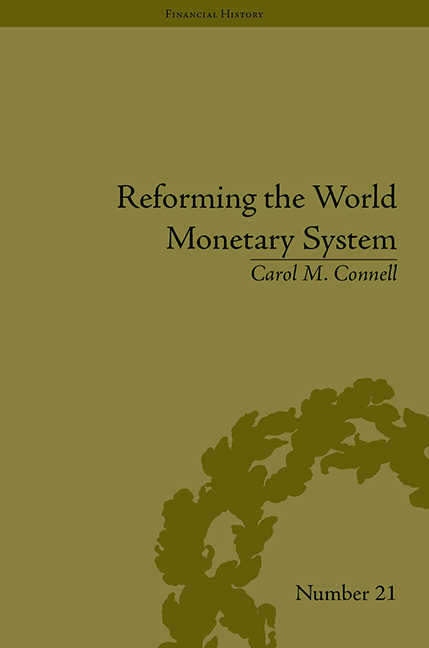Book contents
- Frontmatter
- Contents
- Acknowledgements
- List of Figures and Tables
- Introduction
- 1 A Crisis in Confidence
- 2 Fritz Machlup, his Research and Methodology
- 3 Robert Triffin and the Triffin Plan
- 4 William Fellner and the Intersection of Macro and Microeconomics
- 5 Why Economists Disagree: The Role of Framing in Consensus Building
- 6 ‘Assuring the Free World's Liquidity’ through Multiple Reserve Currencies
- 7 Milton Friedman and the Arguments for Flexible versus Fixed Exchange Rates
- 8 Collaboration with the Group of Ten
- 9 Adjustment Policies and Special Drawing Rights: Joint Meetings of Officials and Academics
- 10 From the Bellagio Group to the Bürgenstock Conferences
- 11 From the Bellagio Group and Joint Conferences of Officials and Academics to the Group of Thirty
- 12 Reassessing the Bellagio Group's Impact on International Monetary Reform
- 13 The Impact of the Bellagio Group on International Trade and Finance Scholarship from the 1960s to the Present
- Conclusions
- Notes
- Works Cited
- Index
2 - Fritz Machlup, his Research and Methodology
- Frontmatter
- Contents
- Acknowledgements
- List of Figures and Tables
- Introduction
- 1 A Crisis in Confidence
- 2 Fritz Machlup, his Research and Methodology
- 3 Robert Triffin and the Triffin Plan
- 4 William Fellner and the Intersection of Macro and Microeconomics
- 5 Why Economists Disagree: The Role of Framing in Consensus Building
- 6 ‘Assuring the Free World's Liquidity’ through Multiple Reserve Currencies
- 7 Milton Friedman and the Arguments for Flexible versus Fixed Exchange Rates
- 8 Collaboration with the Group of Ten
- 9 Adjustment Policies and Special Drawing Rights: Joint Meetings of Officials and Academics
- 10 From the Bellagio Group to the Bürgenstock Conferences
- 11 From the Bellagio Group and Joint Conferences of Officials and Academics to the Group of Thirty
- 12 Reassessing the Bellagio Group's Impact on International Monetary Reform
- 13 The Impact of the Bellagio Group on International Trade and Finance Scholarship from the 1960s to the Present
- Conclusions
- Notes
- Works Cited
- Index
Summary
Introduction
Born 1902, Fritz Machlup's lifelong interest in monetary economics and methodology were shaped by the Europe of his university days (1920–3), as well as by his specifically Austrian roots. In his 1980 career retrospective, ‘My Early Work on International Monetary Problems’, Machlup paints a picture of pre- and post-World War I Europe. The Europe of 1914 had ten currencies, all with fixed gold parities and fixed exchange rates. The Europe of 1920 had twenty-seven paper currencies, none with a gold parity, none with fixed exchange rates and several of them in various stages of inflation or hyperinflation. Monetary experts were raising questions about the best techniques for stabilization and perhaps a return to the gold standard.
This chapter focuses on Fritz Machlup's body of work in monetary economics from 1923 to 1962, particularly his early writings on the gold standard; the theory of foreign exchanges, trade and devaluation; opportunity costs; frameworks for organizing and assessing change in payments balance and exchange rate policies, including his distinctive writing on issues of payments adjustment, liquidity and confidence; through to his 1962 Plans for Reform of the International Monetary System. Because Machlup, much like William Fellner, pursued so many areas of economics – from patents to the production of knowledge to the theory of the firm – and published prolifically in these areas, the chapter also gives some focus to these areas.
- Type
- Chapter
- Information
- Reforming the World Monetary SystemFritz Machlup and the Bellagio Group, pp. 23 - 36Publisher: Pickering & ChattoFirst published in: 2014



